Your high-power floodlights are failing too soon, costing you time and money. The problem is often hidden. The secret to long-lasting performance lies in the LED driver technology.
An LED driver is crucial because it converts AC power to the low-voltage DC that LEDs need. It regulates current and voltage to prevent overheating and ensure stable, long-lasting performance. A quality driver is the heart of a reliable high-power LED floodlight, protecting it from power fluctuations.
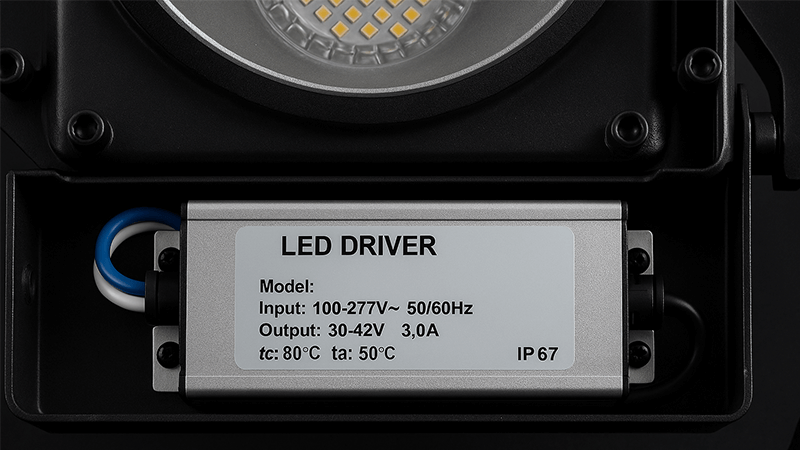
I’ve seen countless projects get derailed by what seemed like minor lighting failures. My client, Shaz, a purchasing manager in the UAE, once faced this exact issue with a large sports stadium project. The lights kept failing, and the supplier was unresponsive. It was a nightmare. This experience taught us a valuable lesson about what really makes a floodlight last. It all comes down to the driver. But what exactly does this small component do, and why is it so important? Let’s break it down.
Why do LED lights need a driver?
You can’t connect an LED directly to your main power. It would instantly burn out. This is where the LED driver comes in, protecting your investment and ensuring functionality.
LEDs need a driver because they run on low-voltage direct current (DC), while power grids supply high-voltage alternating current (AC). The driver converts AC to DC and regulates the current, ensuring the LED receives a stable, precise amount of power to operate safely and efficiently.
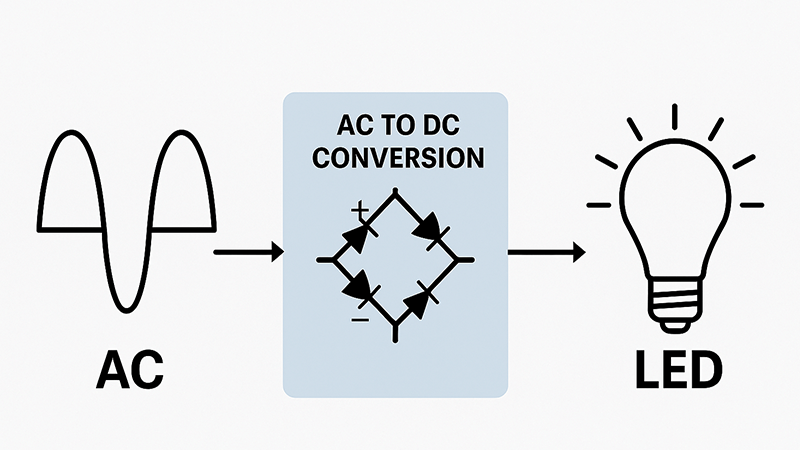
The basic job of the driver is to act as a translator between the power grid and the LED. Mains power from a wall socket is high-voltage Alternating Current (AC), often 220V or higher. In contrast, LEDs are delicate semiconductors that run on low-voltage Direct Current (DC), usually just a few volts. Without a driver, connecting an LED to an AC source is like trying to run a small toy car motor with a lightning bolt. It will be overwhelmed instantly.
The driver performs this essential conversion from AC to DC. But its job is more complex than that. A key function is providing a constant current. An LED’s light output is directly related to the current it receives. As an LED operates, it heats up. This heat lowers its internal resistance, causing it to draw more current if connected to a constant voltage source. This creates a dangerous cycle called thermal runaway: more heat leads to more current, which leads to even more heat, until the LED destroys itself. A good driver prevents this by supplying a steady, regulated current, regardless of temperature changes. This is a critical detail. Many suppliers sell lights with long-life LED chips but pair them with cheap drivers that fail to manage this, causing the huge gap between advertised and actual lifespan.
Here’s how these two scenarios compare:
| Feature |
Direct AC Connection (Hypothetical) |
Connection with an LED Driver |
| Power Type |
High-Voltage AC |
Low-Voltage DC |
| Current Control |
Uncontrolled and destructive surge |
Constant, regulated current |
| LED Lifespan |
Less than one second |
50,000+ hours |
| Safety |
Extremely high risk of failure and fire |
Safe, stable, and reliable operation |
| Performance |
Instant burnout |
Consistent and high-quality light output |
This is why, when a client’s floodlights are failing, the first thing I investigate is the driver. An unstable power grid can introduce voltage spikes and dips, and only a high-quality driver can absorb these fluctuations and protect the delicate LED chip.
What is the purpose of a driver in an LED lighting assembly?
Your premium LEDs are flickering and dimming, making your project look amateur. This inconsistency is frustrating. The driver’s real purpose is to guarantee stable, high-quality light performance.
The purpose of a driver is to act as the central control unit for the LED. It ensures electrical compatibility, provides over-voltage and over-current protection, manages heat, and enables features like dimming. It dictates the overall quality, reliability, and lifespan of the entire lighting fixture.
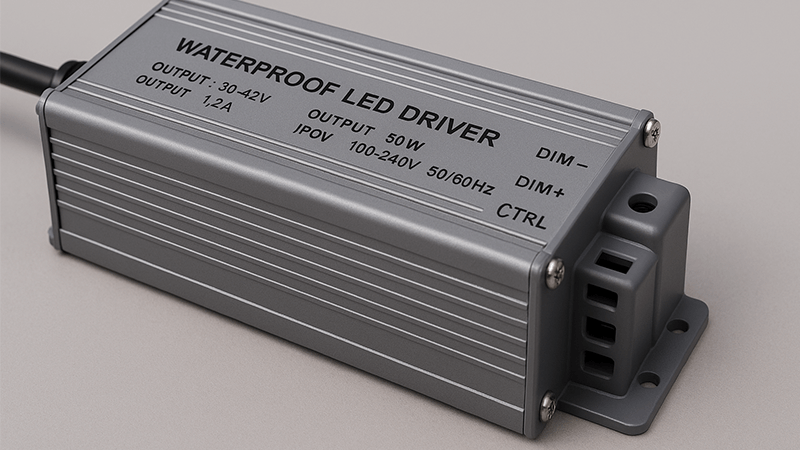
Thinking of a driver as just a power converter is a huge understatement. It’s the brain and the bodyguard of the entire floodlight. Its purpose is to ensure the light not only turns on but performs flawlessly and survives in its environment for years.
First, the driver serves as a protector. Outdoor floodlights are exposed to harsh electrical conditions, from grid instability to lightning-induced surges. A quality driver is equipped with multiple layers of built-in protection. These are non-negotiable features for any serious project. When I work with purchasing managers like Shaz, we always specify high surge protection ratings, like 6KV or 10KV. A manufacturer that omits these protections is simply passing the risk onto the customer. This leads to premature failures and a reliance on after-sales service that is often slow or nonexistent. The best service is a product that doesn’t fail in the first place.
Second, the driver is an enabler of performance and control. It dictates the quality of the light itself. For example, a good driver eliminates flicker, which is essential for any area that will be filmed, like a sports field or public square. It also ensures a high Power Factor (PF), meaning the fixture uses electricity efficiently. For a project with hundreds of high-power lights, a high PF can lead to significant savings on electricity bills. Beyond that, the driver unlocks advanced control features.
| Feature |
Description |
Importance for High-Power Floodlights |
| Dimming |
Allows adjusting brightness (e.g., 0-10V, DALI). |
Saves energy, creates specific lighting moods, and complies with local codes. |
| Flicker-Free |
Provides a smooth, non-stuttering light output. |
Crucial for any form of video recording and for reducing eye strain. |
| Power Factor Correction |
Measures and improves electrical efficiency. |
Lowers operating costs and reduces the load on the electrical infrastructure. |
Lastly, the driver’s health is directly tied to the floodlight’s physical design. Even the best driver in the world will fail if it’s installed in a sealed, unventilated housing where heat builds up. A thoughtful design ensures there is proper heat dissipation for both the LED chips and the driver, allowing the entire system to work in harmony.
What happens if you don’t use an LED driver?
What if you skipped the driver and connected an LED directly to the wall? This "shortcut" would mean instant failure. The result is a dead light and a potential electrical hazard.
Without a driver, connecting an LED to a standard AC power source would cause it to burn out instantly. The high AC voltage and uncontrolled current would overwhelm the delicate semiconductor, leading to catastrophic failure, potential smoke, and a complete loss of the lighting fixture.
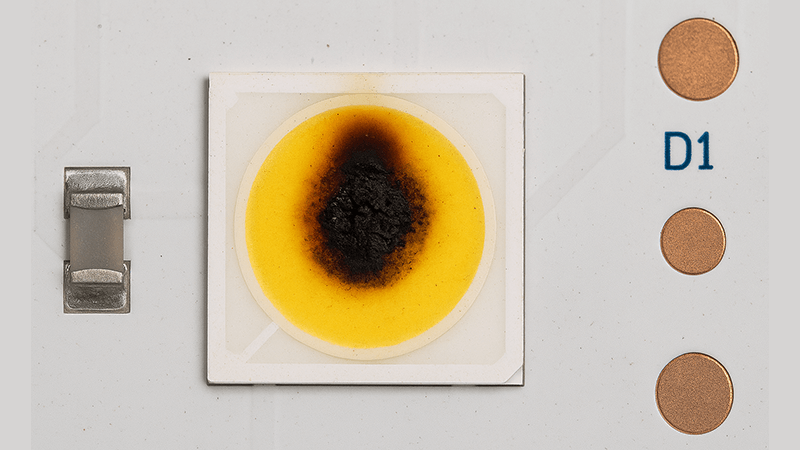
This question has a very simple and destructive answer. Connecting an LED chip directly to a 220V AC outlet would destroy it in a literal flash. It’s a complete mismatch of electrical properties. The LED is designed for a gentle, steady stream of low-voltage DC power. The outlet provides a powerful, chaotic torrent of high-voltage AC power.
The moment you make that connection, an uncontrolled rush of voltage and current would flood the LED’s semiconductor junction. This would generate an incredible amount of heat in a fraction of a second, far beyond what the tiny component can handle. The internal materials would melt, the circuit would break, and the LED would be permanently dead. This is not a slow decline in performance; it is an immediate and catastrophic failure.
Now, you may have encountered products marketed as "driverless" or "Driver-on-Board" (DOB). This terminology can be misleading. These lights are not truly driverless. They still perform the essential functions of a driver. The difference is that the components needed for AC-to-DC conversion and current regulation are simplified and integrated directly onto the same circuit board as the LED chips. While this design saves space and reduces initial cost, it introduces major compromises, especially for high-power floodlights.
| Aspect |
External Driver (Traditional) |
Driver-on-Board (DOB) |
| Reliability |
High. Key components are separated from LED heat. |
Lower. Driver components are cooked by the heat from the LEDs. |
| Surge Protection |
Can offer robust, high-level protection (e.g., 10KV). |
Very limited or nonexistent surge protection. |
| Flicker |
Can be engineered to be completely flicker-free. |
Often has noticeable flicker, making it unsuitable for many applications. |
| Lifespan |
Long and predictable, often with a 5-7 year warranty. |
Shorter and less predictable due to thermal stress. |
For a fixture like a 300W floodlight, a DOB design is a recipe for disappointment. The immense heat generated by the LEDs will inevitably degrade the nearby driver components, causing the entire light to fail far sooner than expected. This is a common story I hear from clients who bought lights based on a low price, only to find they didn’t last.
Can LED lights work without a driver?
Are "driverless" LEDs the future, making drivers unnecessary? This marketing is confusing. The truth is, LEDs always need driver circuitry to function, no matter how it is packaged.
Technically, no. All LEDs require a driver circuit to convert AC to DC and regulate current. "Driverless" or DOB (Driver-on-Board) lights simply integrate these driver components onto the LED board itself, rather than having a separate, external box. A driving circuit is always present.
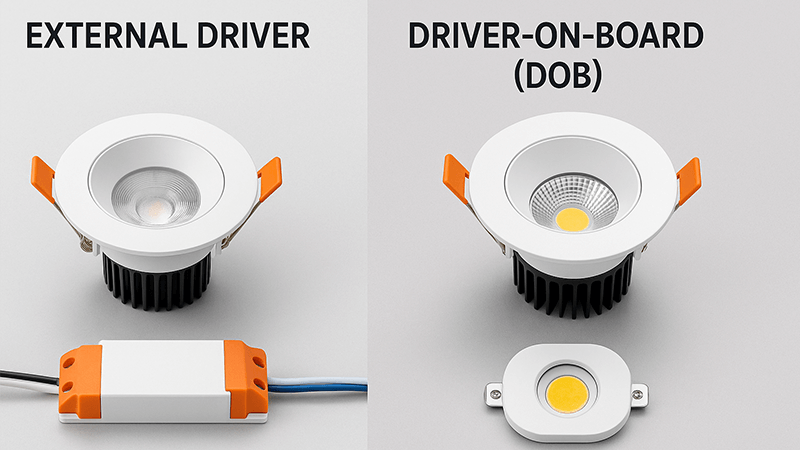
Let’s be perfectly clear: from a functional standpoint, an LED light cannot work without the circuitry of a driver. The question is not if a driver exists, but how it is implemented. The choice between a separate, external driver and an integrated "driverless" DOB design is one of the most critical decisions when sourcing high-power LED floodlights. For any demanding application, an independent, external driver is the superior choice for several key reasons.
1. Superior Thermal Management. Heat is the number one enemy of electronic components. A 200W LED chip generates significant heat. The driver also generates heat during its operation. Placing these two heat sources right next to each other on a single DOB board creates a hot spot that drastically shortens the life of both. An external driver is housed in its own compartment, isolated from the heat of the LEDs. This separation allows each component to be cooled effectively. Many cheap floodlights fail because their poor design traps heat, killing the driver first.
2. Enhanced Serviceability and Maintenance. Imagine a large installation of 100 floodlights on a highway. After a few years, a handful of drivers may fail due to age or extreme power surges. If these fixtures use external drivers, maintenance is simple. You swap out the faulty driver, and the light is back in service. If they were DOB fixtures, you would have to replace the entire light head, which is far more expensive and labor-intensive. Choosing external drivers makes after-sales support easier and reduces long-term operational costs.
3. Unmatched Performance and Flexibility. Companies like Mean Well, Inventronics, and Philips are specialists. They invest heavily in creating drivers that are incredibly efficient, reliable, and versatile.
| Feature |
External Driver Benefit |
DOB Limitation |
| Warranty |
Often 5, 7, or even 10 years. |
Typically 1-3 years, tied to the fixture warranty. |
| Efficiency |
Very high, often >94%, saving electricity. |
Lower, usually between 85-90%. |
| Dimming Protocols |
Supports advanced systems like DALI, DMX, 0-10V. |
Usually just basic on/off, or no options. |
| Certifications |
Carries global safety and performance certifications. |
Certifications can be limited. |
When I advise clients on specifications for critical infrastructure projects, a branded, external driver is a mandatory requirement. It is the single best indicator of a floodlight’s quality and the surest path to achieving long-term performance and reliability.
Conclusion
The LED driver is not an accessory; it’s the core of a floodlight’s reliability. For high-power applications, choosing a quality, external driver is the key to ensuring long life.